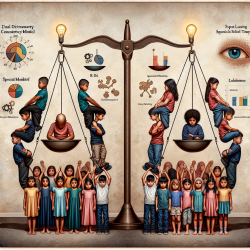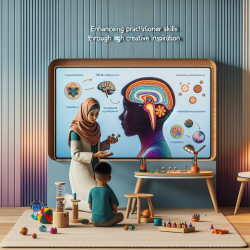Why Misusing IQ Scores Could Be Harming Your Students

The Dual Discrepancy/Consistency (DD/C) Model has gained popularity in identifying Specific Learning Disabilities (SLD) within the U.S. educational system. However, a comprehensive review by Beaujean et al. (2018) in their research paper "A Misuse of IQ Scores: Using the Dual Discrepancy/Consistency Model for Identifying Specific Learning Disabilities" highlights significant issues with this method. This blog aims to provide practitioners with insights from this research to improve their skills and encourage further investigation into effective SLD identification methods.
Understanding the Dual Discrepancy/Consistency Model
The DD/C Model relies on identifying SLD by examining patterns of strengths and weaknesses in IQ and achievement test scores. The model assumes that discrepancies between these scores can accurately identify students with SLD. However, Beaujean et al. (2018) point out several critical flaws in this approach:
- IQ test scores often lack the necessary properties to support the DD/C method.
- There is a lack of experimental evidence validating the utility of the DD/C model.
- The model has been shown to be ineffective in accurately identifying SLD.
Key Findings from the Research
The research by Beaujean et al. (2018) presents three main arguments against the DD/C model:
- Measurement Issues: IQ and achievement test scores are not directly comparable due to differences in their measurement scales. The transformation of scores to a common scale (like IQ) introduces false precision.
- Lack of Diagnostic Utility: Studies show that the DD/C model has low sensitivity and positive predictive value, meaning it often fails to correctly identify students with SLD.
- Over-Reliance on Correlations: The assumption that correlations between IQ and achievement scores imply causality is flawed. The relationship between these scores is complex and not necessarily indicative of an SLD.
Practical Implications for Practitioners
Given these findings, practitioners should be cautious in using the DD/C model for SLD identification. Here are some steps to consider:
- Re-evaluate the reliance on IQ scores for SLD identification and consider alternative methods.
- Focus on comprehensive assessments that include multiple data sources and consider the student's overall educational context.
- Stay informed about the latest research and evidence-based practices in SLD identification.
Encouraging Further Research
The limitations of the DD/C model highlight the need for ongoing research into effective SLD identification methods. Practitioners are encouraged to:
- Engage in professional development opportunities to stay updated on new research findings.
- Collaborate with researchers to contribute to the development of more accurate and reliable SLD identification methods.
- Advocate for evidence-based practices within their schools and professional communities.
To read the original research paper, please follow this link:
A Misuse of IQ Scores: Using the Dual Discrepancy/Consistency Model for Identifying Specific Learning Disabilities.
Citation: Beaujean, A. A., Benson, N. F., McGill, R. J., & Dombrowski, S. C. (2018). A misuse of IQ scores: Using the dual discrepancy/consistency model for identifying specific learning disabilities. Journal of Intelligence, 6(3), 36. https://doi.org/10.3390/jintelligence6030036










